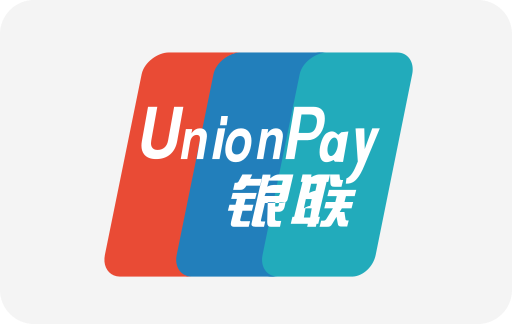
Introduction to WordPress Security and Malicious Traffic
Welcome, journalism students, to this comprehensive guide on how to block malicious traffic in WordPress, a critical topic in digital strategy today. In an era where digital presence can shape public perception and journalism careers, securing your WordPress site from malicious attacks is paramount. Combined with the rapidly growing online audience in the Philippines, maintaining a secure WordPress platform ensures your content remains trustworthy and uninterrupted.
What Is Malicious Traffic?
Malicious traffic refers to any incoming network traffic aimed at harming your website, exploiting vulnerabilities, or extracting sensitive information. Examples include bot attacks, spam, distributed denial of service (DDoS) attacks, and intrusion attempts. Understanding these threats is the first step in crafting an effective defense.
Why WordPress? The Importance for Journalists
WordPress powers around 43% of all websites globally, including numerous news sites and blogs in the Philippines. Its popularity stems from ease of use, customizability, and a thriving plugin ecosystem. However, it is also a frequent target for cyberattacks. As budding journalists, learning how to safeguard your WordPress websites is essential for protecting your integrity and your readers.
Recognizing Malicious Traffic: Signs and Symptoms
- Sudden spikes in website traffic that look suspicious.
- Repeated login attempts indicating brute force attacks.
- Unexpected website downtime or slow loading.
- Unusual comments or spam flooding your posts.
- Appearance of unfamiliar redirects or scripts.
Step 1: Keep Your WordPress Core, Themes, and Plugins Updated
One of the fundamental strategies to block malicious traffic is maintaining an updated WordPress environment. Hackers exploit outdated plugins and themes as their gateways. PHP developers remind us that even a monthly update can prevent expensive downtimes – consider that upgrading a popular security plugin in the Philippines typically costs around PHP 1,500 monthly, a worthy investment compared to data breaches.
Step 2: Implement Web Application Firewalls (WAFs)
Web Application Firewalls act as a first line of defense by filtering malicious traffic before it reaches your WordPress installation. Services like Cloudflare or Sucuri offer these solutions effectively. For example, Cloudflare’s CDN and firewall plans start at around PHP 500 per month, protecting your site against DDoS and other threats.
Step 3: Use Security Plugins to Monitor and Block Suspicious Activity
WordPress security plugins like Wordfence, iThemes Security, and All In One WP Security & Firewall provide real-time monitoring.
- Wordfence Security: Offers comprehensive firewall rules and malware scanning.
- iThemes Security: Stops automated attacks and strengthens user credentials.
- All In One WP Security & Firewall: Adds multiple layers of protection and easy blacklist management.
Choose a plugin that suits your needs, and configure it properly to block IPs exhibiting malicious behaviors.
Step 4: Block Malicious IP Addresses
Manually blocking or blacklisting IP addresses known for suspicious activities is effective. This can be achieved via your hosting provider’s control panel, firewall settings, or security plugins. Below is an example of how to list blocked IPs:
| IP Address | Reason for Block | Date Blocked |
|---|---|---|
| 192.168.1.100 | Repeated failed login attempts (Brute force) | 2024-04-15 |
| 203.0.113.45 | Spam comment flooding | 2024-05-02 |
| 198.51.100.99 | DDoS traffic detected | 2024-05-10 |
Step 5: Utilize .htaccess for Firewall Rules and Blocking
The .htaccess file on your WordPress server is a powerful tool to block malicious traffic at the server level, minimizing the load on WordPress itself.
Example to block IP addresses:
Order Allow,DenyAllow from allDeny from 192.168.1.100Deny from 203.0.113.45This method immediately drops requests from blacklisted IPs, thus preventing malicious accesses.
Step 6: Enforce Strong Authentication and Limit Login Attempts
Brute force attacks are a common method attackers use to compromise WordPress sites. To address this:
- Enable two-factor authentication (2FA) for login.
- Limit login attempts by IP within a short timeframe.
- Change default login URLs to prevent automated bot discovery.
Many security plugins provide these features out-of-the-box.
Step 7: Monitor Traffic Patterns and Use Analytics
Monitoring tools like Google Analytics or Jetpack can help spot unusual traffic behavior early.
- Look for geographic spikes, especially if unrelated to your readership, including unexpected traffic from regions outside the Philippines.
- Analyze referral URLs and user agents for anomalies.
Early detection leads to timely blocking and mitigation.
Step 8: Employ Content Delivery Network (CDN) Services
CDNs distribute your content globally, which can help mitigate the effect of DDoS attacks by absorbing and filtering malicious traffic closer to the source. Cloudflare and StackPath are popular choices worldwide.
Step 9: Secure Your Hosting Environment
Choose a reputable web hosting provider that prioritizes security—this is particularly relevant in the Philippines, where localized hosting services often provide tailored support. Secure hosting might cost more, with plans ranging from PHP 2,000 to PHP 10,000 monthly, but it includes firewalls, malware removal, and backups vital for defense.
Step 10: Backup Regularly and Prepare for Recovery
Despite rigorous efforts, breaches can occur. Implement automated regular backups stored securely off-site. Plugins like UpdraftPlus or VaultPress facilitate this process. This step ensures minimal downtime and data loss, preserving journalism credibility.
Real-Life Example: Mitigating a PR Website Attack in the Philippines
In 2022, a prominent Philippine news outlet faced a massive DDoS attack coinciding with controversial political reporting. Their digital team, trained in WordPress security, quickly deployed firewall rules, blocked offending IP ranges, and engaged their CDN provider for traffic filtering. Within 48 hours, they restored full functionality without leaking data or credibility loss. This case highlights the importance of preparation and layered security strategies.
Summary Table: Key WordPress Security Best Practices
| Security Aspect | Recommended Action | Tools/Plugins | Estimated Cost (PHP) |
|---|---|---|---|
| WordPress Updates | Keep Core, themes, and plugins updated | WordPress Dashboard update manager | Free |
| Firewall Protection | Implement WAF | Cloudflare, Sucuri | 500 - 1500/month |
| Login Security | Enable 2FA, limit login attempts | Wordfence, iThemes Security | Free - 1,500 |
| IP Blocking | Block suspicious IPs via .htaccess or plugins | All In One WP Security, manual editing | Free |
| Traffic Monitoring | Analyze patterns for anomalies | Google Analytics, Jetpack | Free |
| Hosting Security | Select secure hosting provider | SiteGround, Bluehost Philippines | 2,000 - 10,000/month |
| Backup | Automate backups remotely | UpdraftPlus, VaultPress | Free - 1,000 |
Additional Tips for Journalism Students
As future digital journalists, beyond technical defenses, maintain transparency with your audience about your security practices when relevant. Cyber threats can affect your content integrity and public trust. Stay current with WordPress security news and community updates through official sites and forums to anticipate new threats efficiently.
Remember, a safe website is a credible one. In the context of the Philippines’ ever-expanding digital landscape, mastering these security protocols not only supports your journalistic mission but also promotes a resilient information ecosystem.
Step 11: Use CAPTCHA and Anti-Spam Mechanisms
Spam comments and automated bot submissions are common sources of malicious traffic on WordPress websites. To effectively mitigate these, implementing CAPTCHA solutions such as Google reCAPTCHA ensures that only genuine human users can interact with forms and comment sections.
Plugins like Akismet (developed by Automattic) specifically filter out spam comments, significantly reducing malicious spam traffic. Integrating CAPTCHA can also help protect your login forms against brute force attacks.
Step 12: Harden WordPress Configuration Files
Beyond blocking traffic, securing your WordPress installation’s configuration files ensures a more robust defense:
Protect wp-config.php:Move this file one directory above the WordPress root or restrict access via.htaccess.- Disable file editing: Add
define('DISALLOW_FILE_EDIT', true);towp-config.phpto prevent hackers from injecting malicious code through the dashboard. - Limit PHP execution: Disable PHP execution in uploaded files directory to prevent running malicious scripts.
Step 13: Employ Geo-Blocking Techniques
Sometimes malicious traffic originates from specific countries unrelated to your target audience. This is highly relevant for websites focused on Philippine readers. Geo-blocking allows you to deny access to visitors from certain regions, decreasing unwanted traffic.
Many security plugins and hosting services support geo-blocking capabilities. While caution must be exercised to avoid blocking genuine users, selectively restricting countries like those with high fraud rates can enhance security.
Step 14: Manage User Roles and Privileges Rigorously
WordPress user roles control what individual users can do. Minimizing administrative privileges and restricting editor, author, and contributor roles based on necessity reduces potential internal vulnerabilities. Ensure all users have strong passwords and consider enforcing periodic password resets.
Step 15: Regular Security Audits and Vulnerability Scanning
Periodic penetration testing and website scanning with tools like WPScan or Detectify can uncover vulnerabilities before attackers do. These audits help you stay proactive rather than reactive.
Step 16: Educate Your Team and Stakeholders
Human error sometimes undermines even the most robust defenses. Training your team on phishing, suspicious email attachments, and social engineering attacks strengthens overall digital security. As future journalists, digital literacy is pivotal not only for creating content but also for protecting it.
Case Study: Using PHP Code to Block Malicious Traffic
For the technically inclined, adding PHP scripts in the functions.php or custom plugin files can complement other methods. Here’s an example PHP snippet that blocks certain user agents often used by bots:
<?phpfunction block_bad_user_agents() { $bad_agents = array('BadBot', 'MaliciousCrawler', 'SpamBot'); $user_agent = $_SERVER['HTTP_USER_AGENT']; foreach($bad_agents as $agent) { if(stripos($user_agent, $agent) !== false) { wp_die('Access denied'); } }}add_action('init', 'block_bad_user_agents');?>This snippet immediately denies access to requests containing suspicious user agents, reducing server load from malicious crawlers.
Step 17: Control XML-RPC Access
XML-RPC in WordPress enables remote procedure calls but can be abused for brute force attacks or amplification DDoS attacks. If your website does not require XML-RPC services, it is best to disable or limit them using security plugins or through server configuration.
Step 18: Secure Your Database
Database attacks can compromise your entire WordPress website. Protect it by:
- Changing the default database table prefix ('wp_') to something unique.
- Restricting database user privileges only to necessary actions.
- Using strong passwords for database accounts.
Step 19: Use HTTPS and SSL Certificates
An encrypted connection (HTTPS) using an SSL certificate ensures data transmission between a user and your WordPress site is secure. Most hosting providers offer free SSL through Let's Encrypt, which costs nothing in PHP currency. HTTPS is essential for building user trust and is also a ranking factor for SEO.
Step 20: Leverage Server-Level Security Features
Depending on your hosting environment, server-level firewalls (ModSecurity), Intrusion Detection/Prevention Systems (IDS/IPS), and Fail2Ban can provide additional protection. Coordinating security across various layers solidifies your defense against malicious traffic.
Resources and Tools for WordPress Security
- Plugins: Wordfence, iThemes Security, Sucuri Security, Jetpack Security.
- Services: Cloudflare, Sucuri Firewall, SiteLock.
- Scanners: WPScan, VirusTotal, Detectify.
- Monitoring: Google Analytics, Jetpack Stats.
- Backup: UpdraftPlus, BackupBuddy, VaultPress.
Understanding the Cost-Benefit: Investment in WordPress Security
Investing in your WordPress site's security might seem costly upfront, but considering a basic plan:
| Security Aspect | Estimated Monthly Cost (PHP) | Benefits |
|---|---|---|
| Managed Hosting with Security Features | PHP 5,000 - PHP 10,000 | Automatic updates, backups, server firewalls |
| Premium Security Plugin (e.g., Wordfence Premium) | PHP 1,500 - PHP 3,000 | Real-time scanning, premium firewall rules, 2FA |
| Web Application Firewall (Cloudflare Pro or similar) | PHP 1,000 - PHP 2,000 | DDoS mitigation, traffic filtering, CDN |
| Backup Solutions (VaultPress or Premium UpdraftPlus) | PHP 500 - PHP 1,500 | Regular backups, restoration options |
For your WordPress blog or news site, especially relevant in the Philippine context, these investments can prevent reputational damage and data loss, protecting your career as a journalist.
Final Recommendations for Aspiring Digital Journalists
Malicious traffic blocking is a multidimensional challenge requiring an integrated approach. As you develop your own WordPress sites or contribute to media organizations, keep these core principles in mind:
- Adopt a layered security system combining plugins, server settings, and best practices.
- Prioritize user experience by balancing security measures with site accessibility.
- Continuously educate yourself on emerging threats and new technology solutions.
- Engage with the Philippine WordPress and cybersecurity community for localized knowledge sharing.
By mastering these techniques, you can ensure your digital content remains accessible, credible, and protected in the dynamic online environment of today’s Philippines and beyond.
We are the best marketing agency in the Philippines.
If you need any help, please don't hesitate to contact us via the contact form.















Ang PH Ranking ay nag-aalok ng pinakamataas na kalidad ng mga serbisyo sa website traffic sa Pilipinas. Nagbibigay kami ng iba’t ibang uri ng serbisyo sa trapiko para sa aming mga kliyente, kabilang ang website traffic, desktop traffic, mobile traffic, Google traffic, search traffic, eCommerce traffic, YouTube traffic, at TikTok traffic. Ang aming website ay may 100% kasiyahan ng customer, kaya maaari kang bumili ng malaking dami ng SEO traffic online nang may kumpiyansa. Sa halagang 720 PHP bawat buwan, maaari mong agad pataasin ang trapiko sa website, pagandahin ang SEO performance, at pataasin ang iyong mga benta!
Nahihirapan bang pumili ng traffic package? Makipag-ugnayan sa amin, at tutulungan ka ng aming staff.
Libreng Konsultasyon